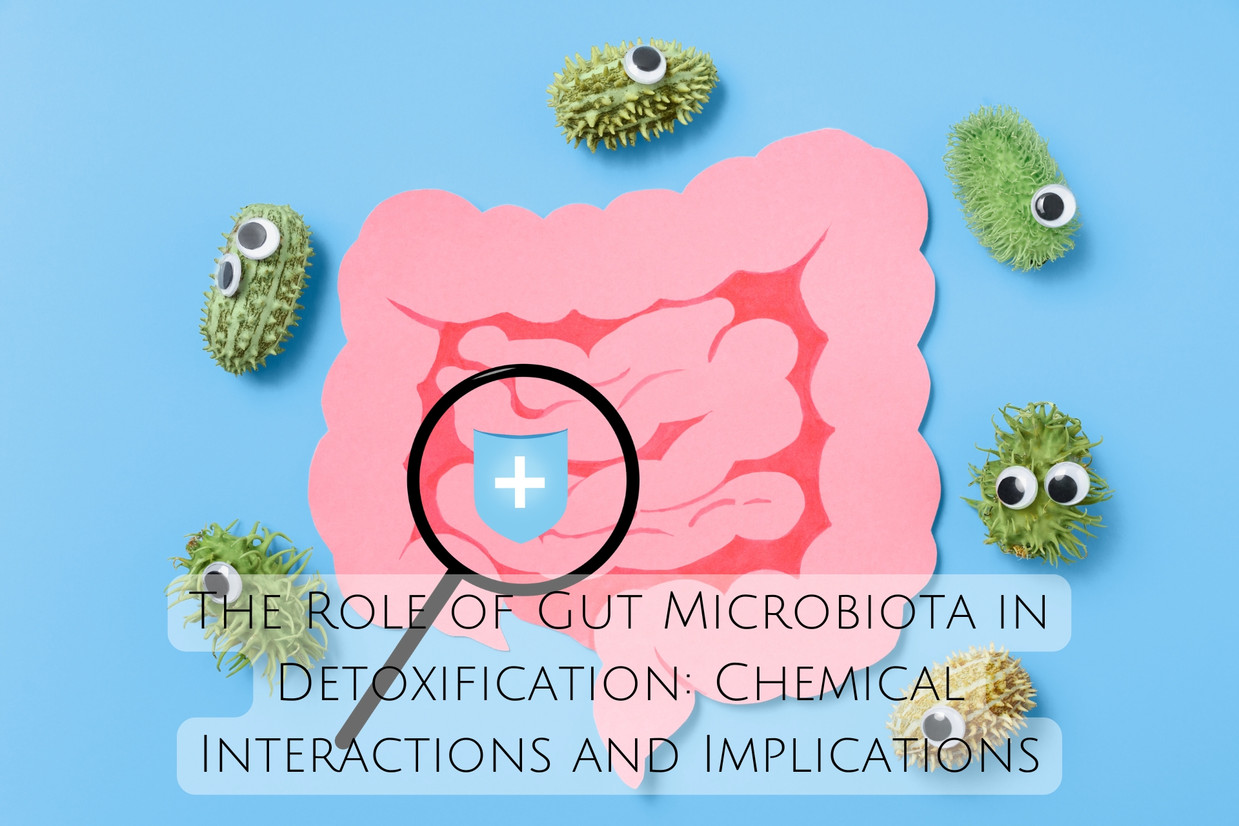The Role of Gut Microbiota in Detoxification: Chemical Interactions and Implications
The human gut is home to trillions of microorganisms collectively known as the gut microbiota. These microbes play a crucial role in various bodily functions, including digestion, immune modulation, and the production of essential vitamins. One of their lesser-known but critical roles is in detoxification—the process by which harmful substances, such as toxins, drugs, and metabolic waste products, are neutralized and eliminated from the body.
In this article, we’ll explore the fascinating ways in which gut microbiota interact with chemicals, influence detoxification pathways, and affect overall health. We’ll also discuss the implications of these interactions for disease prevention, therapy, and the maintenance of well-being.
What is Detoxification?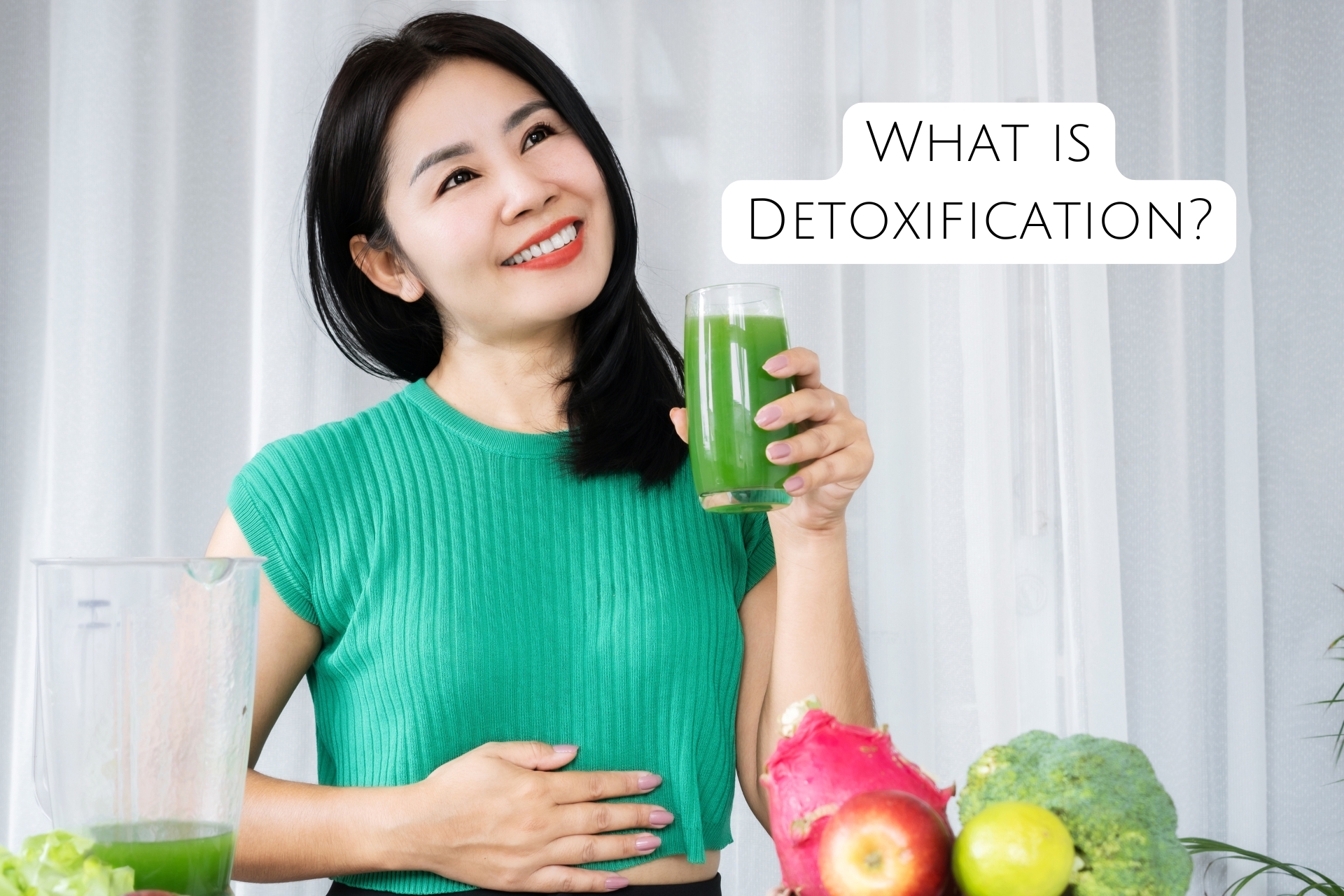
Detoxification is the body’s natural process of removing harmful substances, primarily through the liver, kidneys, skin, and intestines. This process involves two key phases in the liver:
- Phase I Detoxification: Enzymes like cytochrome P450 transform fat-soluble toxins into intermediate metabolites, which are often more reactive and potentially harmful.
- Phase II Detoxification: Conjugation reactions add water-soluble molecules to these intermediates, making them easier to excrete through urine or bile.
While these phases are traditionally associated with the liver, the gut microbiota significantly influences detoxification. They interact with ingested and endogenous chemicals, altering their bioavailability, metabolism, and excretion.
How Gut Microbiota Influence Detoxification:
1. Metabolism of Toxins:
The gut microbiota can metabolize xenobiotics (foreign substances) and endogenous toxins, often producing metabolites that are easier for the body to excrete. For example:
- Polyphenols: Plant-based antioxidants found in foods like berries and green tea are metabolized by gut bacteria into bioactive compounds with enhanced detoxifying properties.
- Drugs: Gut microbes can activate, deactivate, or modify drugs. For instance, the microbiota can convert sulfasalazine, a drug for inflammatory bowel disease, into its active form.
2. Interaction with Phase I and Phase II Enzymes:
Gut bacteria produce enzymes such as β-glucuronidase, which can reverse conjugation reactions (a key Phase II process). While this can sometimes re-release toxins into circulation, it also highlights the intricate interplay between gut microbes and the liver's detox pathways.
3. Binding and Sequestering Toxins:
Certain gut bacteria can bind to heavy metals, environmental pollutants, and bile acids, reducing their absorption into the bloodstream and facilitating their excretion. For instance:
- Lactobacillus and Bifidobacterium species have been shown to bind to aflatoxins, toxic compounds produced by certain fungi, preventing them from entering circulation.
4. Regulation of Bile Acid Metabolism:
The gut microbiota plays a pivotal role in bile acid metabolism, which is essential for fat digestion and the elimination of fat-soluble toxins. Gut bacteria convert primary bile acids into secondary bile acids, which can influence the excretion of cholesterol, toxins, and drugs.
Chemical Interactions Between Gut Microbiota and Toxins: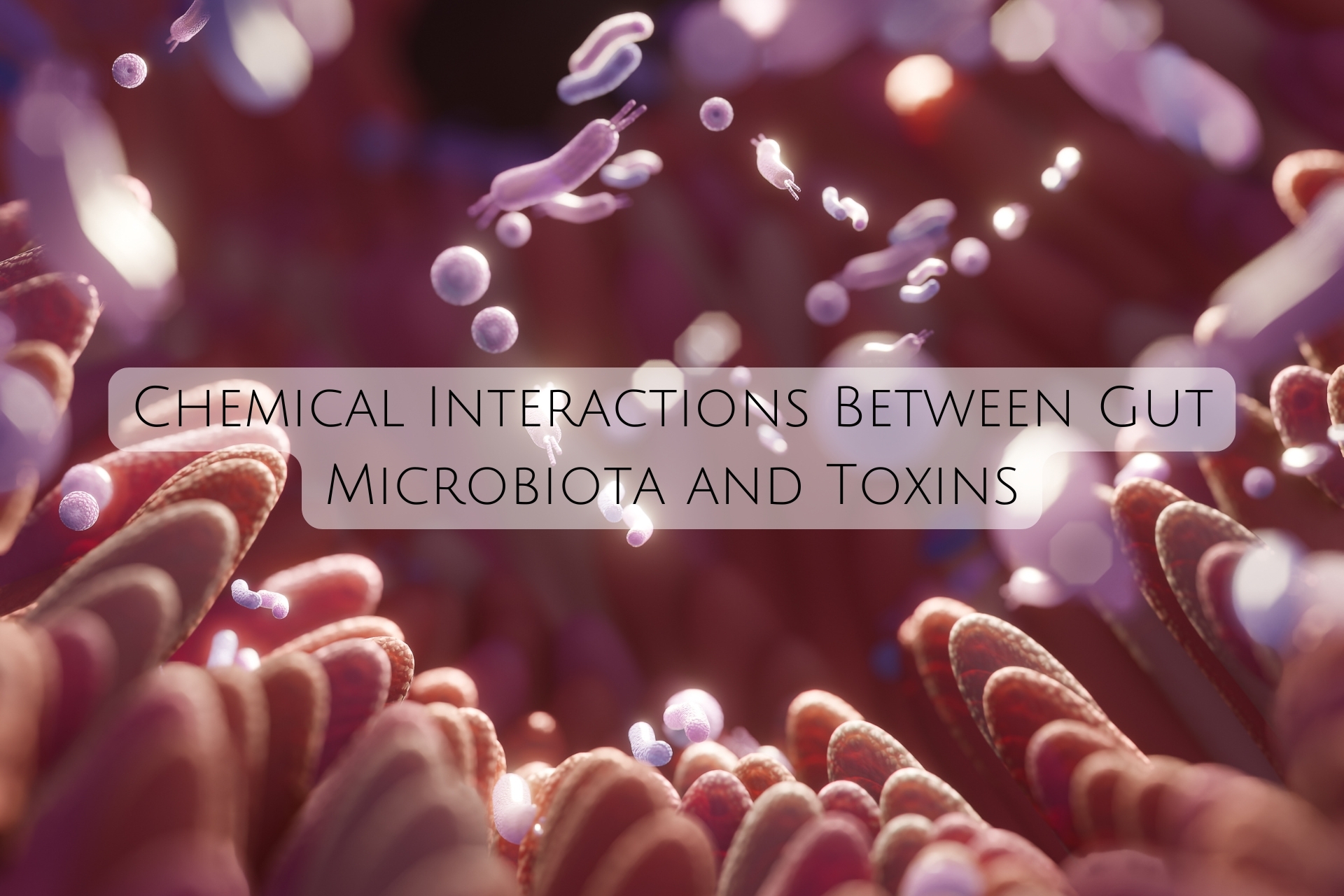
The gut microbiota's ability to process chemicals varies depending on the type of toxin or compound. Key interactions include:
1. Heavy Metals:
Gut bacteria can bind to heavy metals like mercury, cadmium, and lead, reducing their systemic absorption. For example:
- Probiotics such as Lactobacillus rhamnosus have demonstrated the ability to reduce heavy metal toxicity by binding to these substances in the gut.
2. Pesticides and Environmental Pollutants:
Certain pesticides and pollutants, such as organophosphates, can disrupt the gut microbiota. Conversely, a healthy microbiota can metabolize some pesticides into less harmful forms.
3. Pharmaceuticals:
Gut microbes can modulate the efficacy and toxicity of drugs. For instance:
- Antibiotics: While they target harmful bacteria, antibiotics also disrupt beneficial gut microbes, potentially impairing detox pathways.
- Acetaminophen: Gut microbiota influences the metabolism and toxicity of acetaminophen, affecting its safety and therapeutic window.
4. Carcinogens:
Certain gut bacteria can either activate or deactivate carcinogens. For example:
- Nitrosamines, found in processed meats, can be metabolized by gut bacteria into cancer-causing compounds. However, a balanced microbiota may counteract these effects by promoting detoxification.
Implications of Gut Microbiota Detoxification: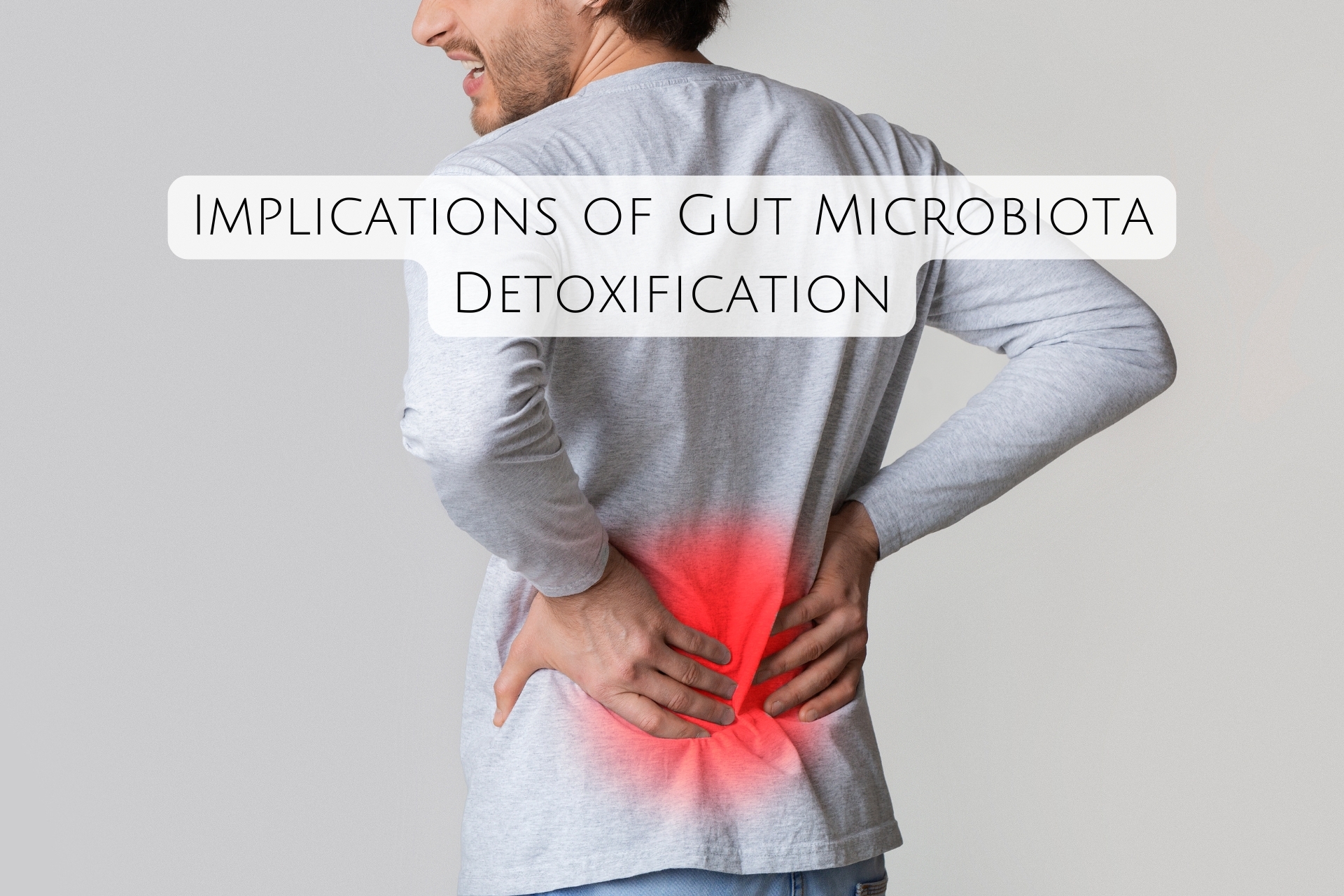
The gut microbiota’s role in detoxification has profound implications for health, disease prevention, and therapeutic interventions:
1. Chronic Disease Prevention:
A well-functioning microbiota can protect against diseases associated with toxin accumulation, such as:
- Liver diseases: A healthy microbiota reduces the load on the liver, preventing conditions like fatty liver disease.
- Gut microbiota can reduce the systemic burden of these neurotoxins.
2. Immune System Modulation:
Detoxification of harmful chemicals by gut bacteria can reduce systemic inflammation and immune activation, lowering the risk of autoimmune conditions and allergies.
3. Cancer Risk Reduction:
By modulating carcinogen metabolism, gut bacteria can lower the risk of certain cancers, particularly colorectal cancer.
4. Enhanced Drug Efficacy and Safety:
Understanding gut microbiota-drug interactions can help optimize drug dosing, reduce side effects, and improve therapeutic outcomes.
How to Support Gut Microbiota for Optimal Detoxification: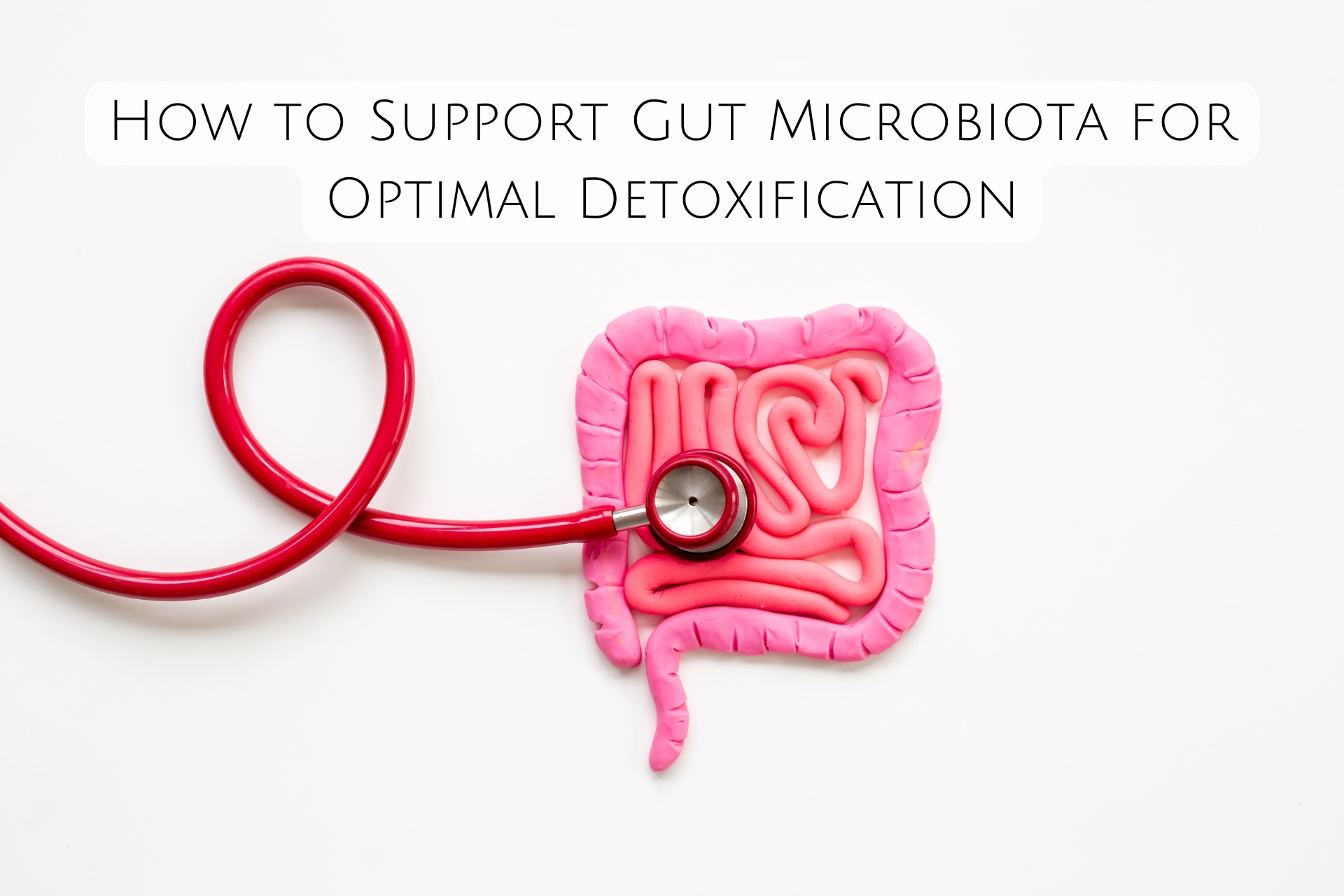
Maintaining a healthy gut microbiota is key to enhancing detoxification.
- Consume Prebiotics and Probiotics
- Prebiotics: Found in foods like garlic, onions, bananas, and oats, prebiotics feed beneficial gut bacteria.
- Probiotics: Fermented foods like yogurt, kefir, kimchi, and sauerkraut introduce beneficial bacteria into the gut.
2. Eat a Diverse, Fiber-Rich Diet:
Fiber promotes the growth of beneficial bacteria and helps bind toxins in the gut.
- Limit Exposure to Toxins:
Reduce intake of processed foods, avoid unnecessary medications, and choose organic products when possible to minimize pesticide and chemical exposure.
4. Stay Hydrated:
Adequate water intake supports the elimination of toxins through the kidneys and gastrointestinal tract.
5. Avoid Disruptors:
Limit the use of antibiotics and NSAIDs, which can harm gut bacteria, unless absolutely necessary.
6. Consider Detoxification Protocols:
For individuals exposed to high levels of toxins, specific detox protocols, including supplements like activated charcoal or chlorella, may help.
Conclusion:
The gut microbiota plays a central role in detoxification by metabolizing harmful chemicals, binding toxins, and influencing systemic detox pathways. A healthy microbiome not only enhances the body’s ability to handle toxins but also reduces the risk of chronic diseases associated with chemical exposures. By supporting gut health through a balanced diet, probiotics, and mindful lifestyle choices, individuals can optimize their detoxification processes and safeguard their overall health.
Recent Posts
-
Unlocking Your Body’s Healing Potential: The Role of Stemregen in Anti-Aging
In today’s pursuit of longevity and youthful vitality, anti-aging solutions are rapidly evolving, wi
-
Water Memory: The Quantum Perspective on Why Water is More Than H₂O
Water is everywhere—covering over 70% of the Earth’s surface, coursing through our bodies, and essen
-
What Are Biofilms and Why Are They So Hard to Get Rid Of?
Biofilms are fascinating yet challenging structures that have significant implications for health, i

